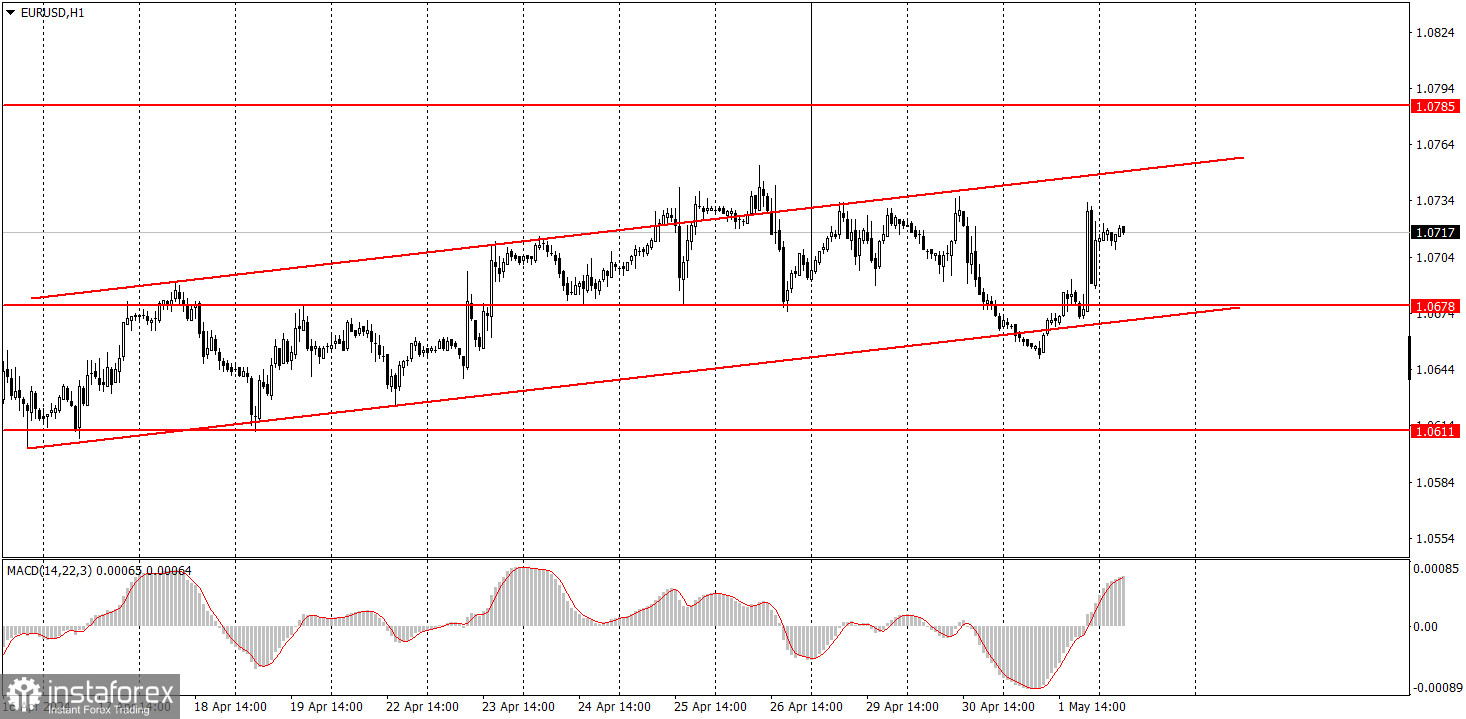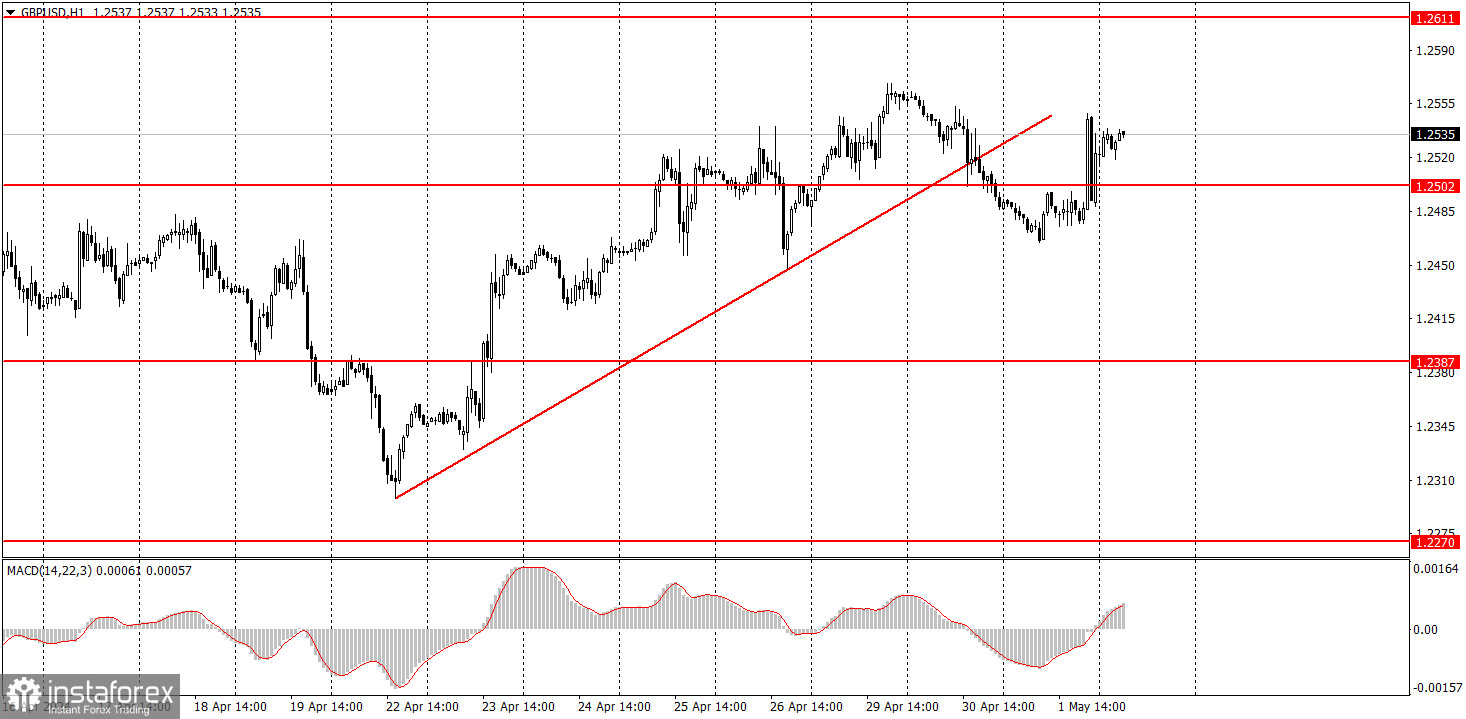Analysis of macroeconomic reports:

There are fewer macroeconomic events on Thursday, and none of them are crucial. The second estimates of the manufacturing Purchasing Managers' Index (PMI) for Germany and the EU will be published. These reports are objectively less important than the initial estimates. Final estimates rarely show significantly different values from preliminary ones. The US docket will feature the number of initial jobless claims, which also rarely shows resonant values and hardly triggers a market reaction. Yesterday, we saw a fairly consistent rise in the euro and the pound; today, the market may start to "restore fairness." At least, after yesterday, we did not see any new supporting factors that can lift the European and British currencies.
Analysis of fundamental events:
Among today's fundamental events, we can highlight European Central Bank Chief Economist Philip Lane's speech. It's difficult to say what kind of information he could provide for the markets. Inflation in the EU continues to slow down, and practically all ECB officials have expressed support for monetary policy easing in June. At the same time, the Federal Reserve has pushed back the timing of a rate cut, so we still believe that the euro should fall against the dollar.
General conclusion:
Today, there are no significant events scheduled in Germany, the EU, the US, or the UK. After both currency pairs traded higher on Wednesday, we expect prices to fall. We believe that the Fed's stance remained unchanged after the meeting, so the market has no grounds for selling the US dollar. Both pairs continue to go through a correction, but these phases will eventually come to an end.
Basic rules of a trading system:
1) Signal strength is determined by the time taken for its formation (either a bounce or level breach). A shorter formation time indicates a stronger signal.
2) If two or more trades around a certain level are initiated based on false signals, subsequent signals from that level should be disregarded.
3) In a flat market, any currency pair can produce multiple false signals or none at all. In any case, the flat trend is not the best condition for trading.
4) Trading activities are confined between the onset of the European session and mid-way through the U.S. session, after which all open trades should be manually closed.
5) On the 30-minute timeframe, trades based on MACD signals are only advisable amidst substantial volatility and an established trend, confirmed either by a trendline or trend channel.
6) If two levels lie closely together (ranging from 5 to 15 pips apart), they should be considered as a support or resistance zone.
How to read charts:
Support and Resistance price levels can serve as targets when buying or selling. You can place Take Profit levels near them.
Red lines represent channels or trend lines, depicting the current market trend and indicating the preferable trading direction.
The MACD(14,22,3) indicator, encompassing both the histogram and signal line, acts as an auxiliary tool and can also be used as a signal source.
Significant speeches and reports (always noted in the news calendar) can profoundly influence the price dynamics. Hence, trading during their release calls for heightened caution. It may be reasonable to exit the market to prevent abrupt price reversals against the prevailing trend.
Beginners should always remember that not every trade will yield profit. Establishing a clear strategy coupled with sound money management is the cornerstone of sustained trading success.
 English
English 
 Русский
Русский Bahasa Indonesia
Bahasa Indonesia Bahasa Malay
Bahasa Malay ไทย
ไทย Español
Español Deutsch
Deutsch Български
Български Français
Français Tiếng Việt
Tiếng Việt 中文
中文 বাংলা
বাংলা हिन्दी
हिन्दी Čeština
Čeština Українська
Українська Română
Română


